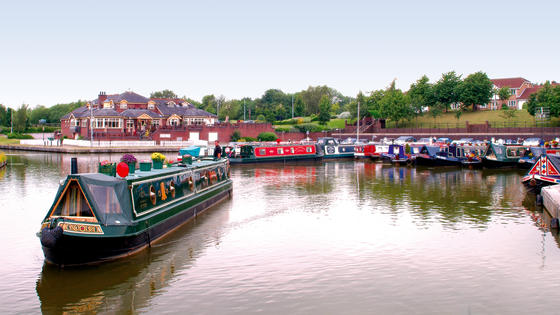
In medieval and Tudor times the area was known as the "the Booths", derived from the name given to the huts that housed the manor herdsmen. Boothstown's origins, however, reach back to Roman times and beyond. A hoard of coins dated 289 - 296 A.D. was found at Boothsbank in 1989. A previous hoard was unearthed in 1947, in an area now occupied by the Orchard Estate. This earlier hoard was hidden only a short distance from the Roman road through Mosley Common, the line of which runs north west of the Yew Tree Pub, approximately 400 yards (370 metres) west of "The City".
In 1323 Henry de Worsley of Worsley gave a share in the estate of Booths to Robert, his son by his second wife. It is thought that Booths Old Hall was built c. 1343 and New Booths Hall in the early 17th century. It was not until 1836, when Lord Francis Egerton purchased the estate from Robert Haldane Bradshaw, that Booths was reunited with the rest of the Manor of Worsley.
In 1759 the transport revolution arrived when Francis Egerton 3rd Duke of Bridgewater, John Gilbert and James Brindley planned a canal to carry coal from the Duke's Worsley Mines to Manchester. In 1795 the canal was extended through Boothstown to Leigh.
One of the wonders of Worsley is its underground canal system, a side arm of which extends under Boothstown and Ellenbrook. However Boothstown has its own underground canal, the 'Chaddock Level'. Constructed c.1816 it ran from the canal near Boothsbank Bridge 950 yards north west to the Chaddock and Queen Anne pits.
The economy of Boothstown was based on the two Lancashire staples, coal and cotton. Cookes Meadow Pit at Ellenbrook dated from 1760-70 but deep mining came with the sinking of Mosley Common Colliery in the 1860s. An early colliery tramway carried coal from the pits south of Hilton Lane down to the canal at Boothstown Basin by using the slope of the land and gravity. In the 1860s a signal was installed to warn road traffic to give way where the tramway crossed Newearth Road, at Mather Fold. Surely Ellenbrook can therefore boast the first traffic lights in the city? Textiles arrived in 1812 when Mr Smith built a small cotton mill in Boothstown Delph, later the firm of William Yates produced the finest quality cotton from 1875 until the mill closed in 1968.
A directory of 1825 lists the village as having a surgeon, a tailor, cotton spinners and manufacturers. It could also boast of a regular coach service and a flourishing Botanical Society founded in 1790. A Victorian guidebook describes the delights awaiting the visitor.
....... a quaint manufacturing village of between sixty and eighty cottages, with a Methodist chapel, post office, mill and two inns, surrounded by charming fields of wildflowers.
Boothstown remained very much a small village until the 1960s when Bridgewater Estates began the process of housing development that continues today. Its mills and mines have gone and the village has grown, but it remains a most attractive and interesting place to live.
Thanks to Ann Monaghan for this history.







